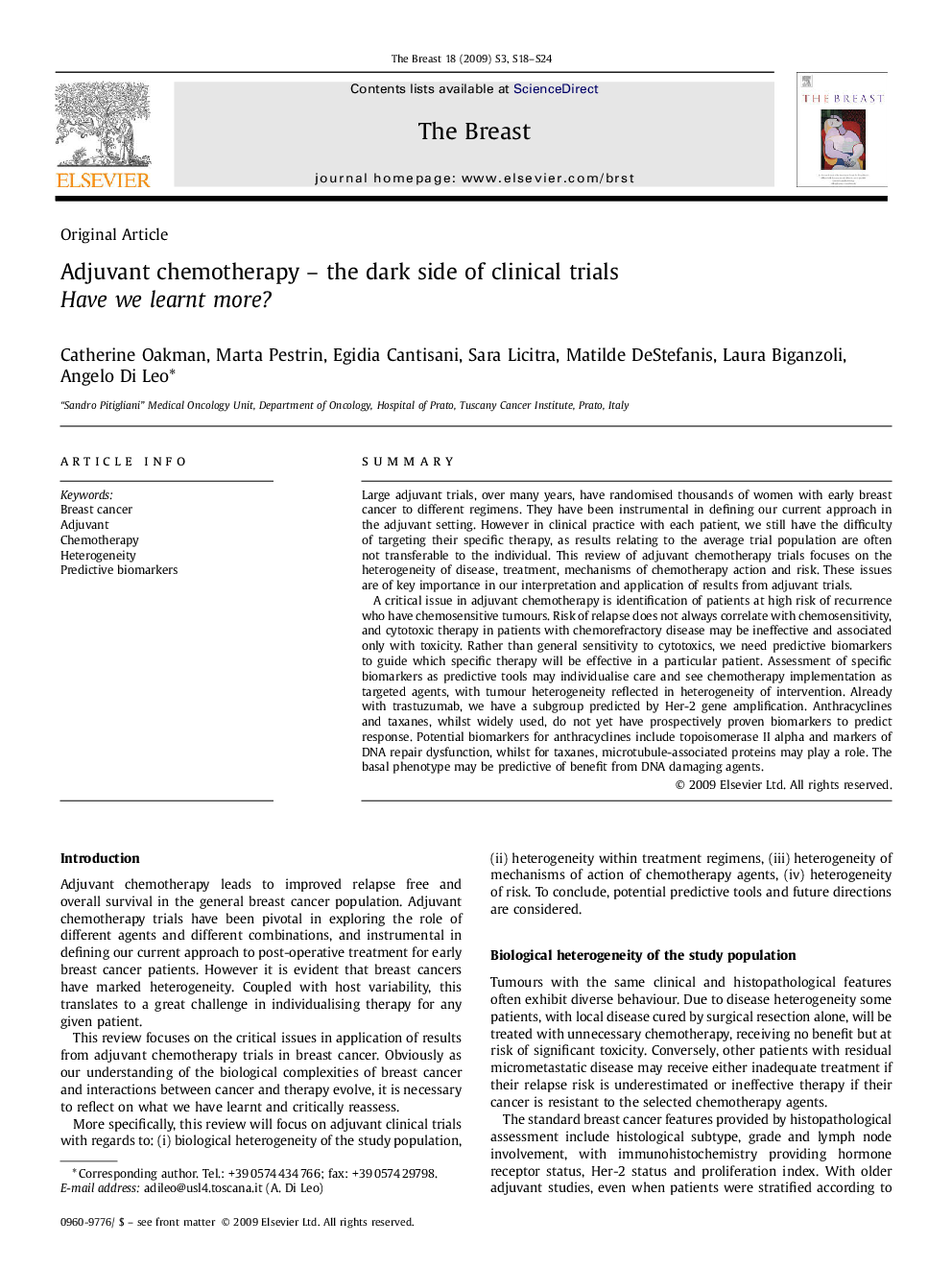| کد مقاله | کد نشریه | سال انتشار | مقاله انگلیسی | نسخه تمام متن |
|---|---|---|---|---|
| 3909436 | 1251217 | 2009 | 7 صفحه PDF | دانلود رایگان |

SummaryLarge adjuvant trials, over many years, have randomised thousands of women with early breast cancer to different regimens. They have been instrumental in defining our current approach in the adjuvant setting. However in clinical practice with each patient, we still have the difficulty of targeting their specific therapy, as results relating to the average trial population are often not transferable to the individual. This review of adjuvant chemotherapy trials focuses on the heterogeneity of disease, treatment, mechanisms of chemotherapy action and risk. These issues are of key importance in our interpretation and application of results from adjuvant trials.A critical issue in adjuvant chemotherapy is identification of patients at high risk of recurrence who have chemosensitive tumours. Risk of relapse does not always correlate with chemosensitivity, and cytotoxic therapy in patients with chemorefractory disease may be ineffective and associated only with toxicity. Rather than general sensitivity to cytotoxics, we need predictive biomarkers to guide which specific therapy will be effective in a particular patient. Assessment of specific biomarkers as predictive tools may individualise care and see chemotherapy implementation as targeted agents, with tumour heterogeneity reflected in heterogeneity of intervention. Already with trastuzumab, we have a subgroup predicted by Her-2 gene amplification. Anthracyclines and taxanes, whilst widely used, do not yet have prospectively proven biomarkers to predict response. Potential biomarkers for anthracyclines include topoisomerase II alpha and markers of DNA repair dysfunction, whilst for taxanes, microtubule-associated proteins may play a role. The basal phenotype may be predictive of benefit from DNA damaging agents.
Journal: The Breast - Volume 18, Supplement 3, October 2009, Pages S18–S24